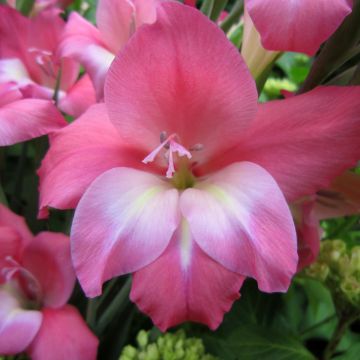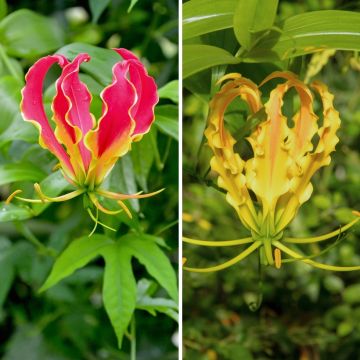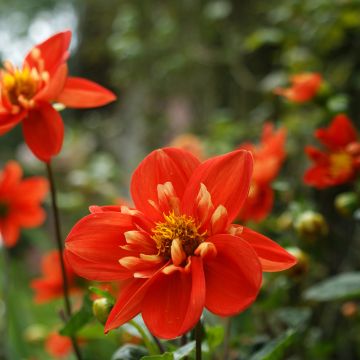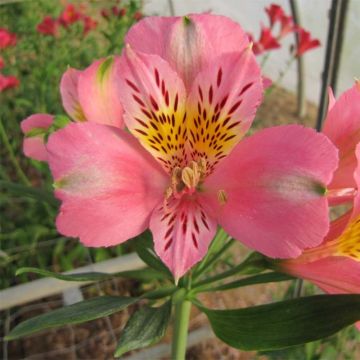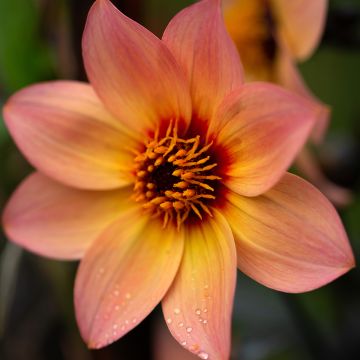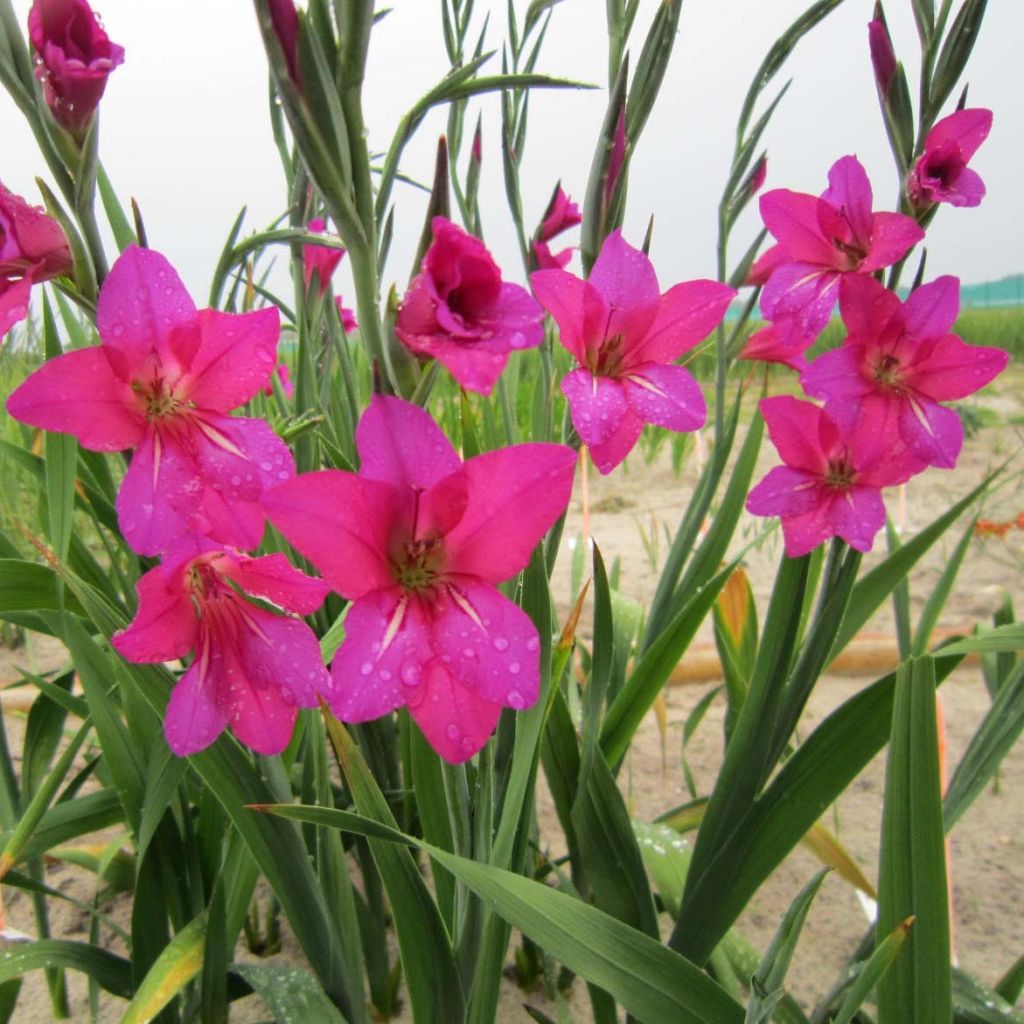

Gladiolus byzantinus Whistling Jack - Byzantine Gladiolus
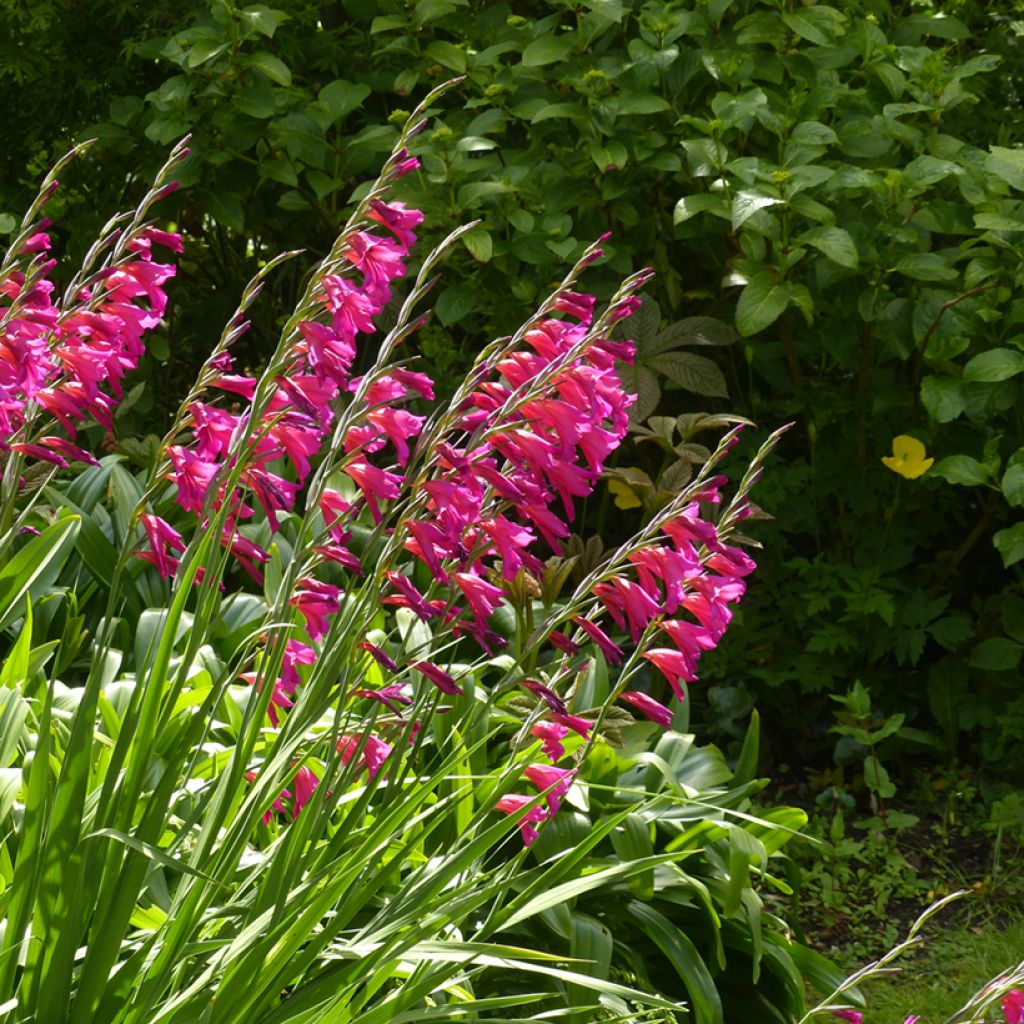

Gladiolus byzantinus Whistling Jack - Byzantine Gladiolus
Gladiolus byzantinus Whistling Jack - Byzantine Gladiolus
Gladiolus byzantinus Whistling Jack
Byzantine Gladiolus, Corn Flag, Whistling Jack
Purchased in February 2023, the bulbs have grown and some have bloomed, and they are simple wild Gladiolus italicus. Nothing to do with the photo that actually shows a beautiful G. byzantinus...
vincent, 08/01/2024
Special offer!
Receive a €20 voucher for any order over €90 (excluding delivery costs, credit notes, and plastic-free options)!
1- Add your favorite plants to your cart.
2- Once you have reached €90, confirm your order (you can even choose the delivery date!).
3- As soon as your order is shipped, you will receive an email containing your voucher code, valid for 3 months (90 days).
Your voucher is unique and can only be used once, for any order with a minimum value of €20, excluding delivery costs.
Can be combined with other current offers, non-divisible and non-refundable.
Home or relay delivery (depending on size and destination)
Schedule delivery date,
and select date in basket
This plant carries a 6 months recovery warranty
More information
We guarantee the quality of our plants for a full growing cycle, and will replace at our expense any plant that fails to recover under normal climatic and planting conditions.


Would this plant suit my garden?
Set up your Plantfit profile →
Description
The true Byzantine Gladiolus, in Latin Gladiolus (x) byzantinus, nicknamed 'Whistling Jack' by the English, is a wonderful wild hybrid originating from Mediterranean regions. Perennial by its storage organ, this gladiolus is slimmer, more graceful, easier to integrate into the garden, and hardier than the large hybrid gladioli. It brings a slightly wild but equally colourful touch to sunny flowerbeds. Its flower spikes unfold in early summer or spring depending on the climate, bearing delicate flowers with a brilliant Tyrian pink colour that changes from red to violet. They make up large and long-lasting bouquets, also brightening up interiors. This gladiolus, well adapted to summer drought, can stay in the ground all winter in most of our regions.
The Byzantine Gladiolus is likely the result of cross-breeding between the Gladiolus dubius (the doubtful gladiolus) and the G. italicus (the harvest gladiolus), both Mediterranean plants. This wild hybrid grows spontaneously in Spain, Sicily, and North Africa. It is less fragile and more cold-resistant than its large South African cousins. Therefore, it is not necessary to uproot it before winter (unless your climate is very harsh). It appreciates well-drained, even sandy soil and full sun exposure. Like all Mediterranean geophyte plants, meaning they have organs that allow them to survive the winter buried in the ground, it blooms before the arrival of summer heat and rests in dry, even calcareous soil during summer.
Like its relatives, it has an upright habit and a very slender appearance. Flowering occurs from April to June depending on the climate, with an earlier onset in the south. It takes the form of solid but thin and flexible flower spikes that rise up to 60 cm (24in) from the ground. 8 to 15 flowers are gathered in spikes on the upper third of the stem. Their petals open into a 6 cm (2in) long funnel shape. Their lively and intense shades vary depending on their ripeness. Often in the range of pinks, they also flirt with red and violet around a beautiful white signal. They emerge from a bouquet of very long, simple, sword-shaped leaves. The name of this plant, gladiolus, comes from Latin: this term means "little sword". The leaves are green and have parallel veins. These leaves allow the plant to store its food reserves, so they should not be cut until they have completely dried out.
The intermediate size of the Byzantine Gladiolus allows it to blend in with clumps of ornamental grasses in large countryside-inspired flowerbeds. It can also be the focal point of a small ensemble, surrounded by perennial geraniums, white lilies, catmints, and moss phlox, for example. It looks stunning among perennial salvias like 'Serenade' or 'Mainacht', or Scilla peruviana. In a wild atmosphere inspired by Mediterranean coasts, combine it with Achillea umbellata or 'Hella Glashoff' yarrow. It is essential in a predominantly pink composition, taking over from irises and accompanying roses. If your region experiences harsh winters, growing it in a pot allows you to bring it indoors in a greenhouse or conservatory during winter.
Report an error about the product description
Gladiolus byzantinus Whistling Jack - Byzantine Gladiolus in pictures
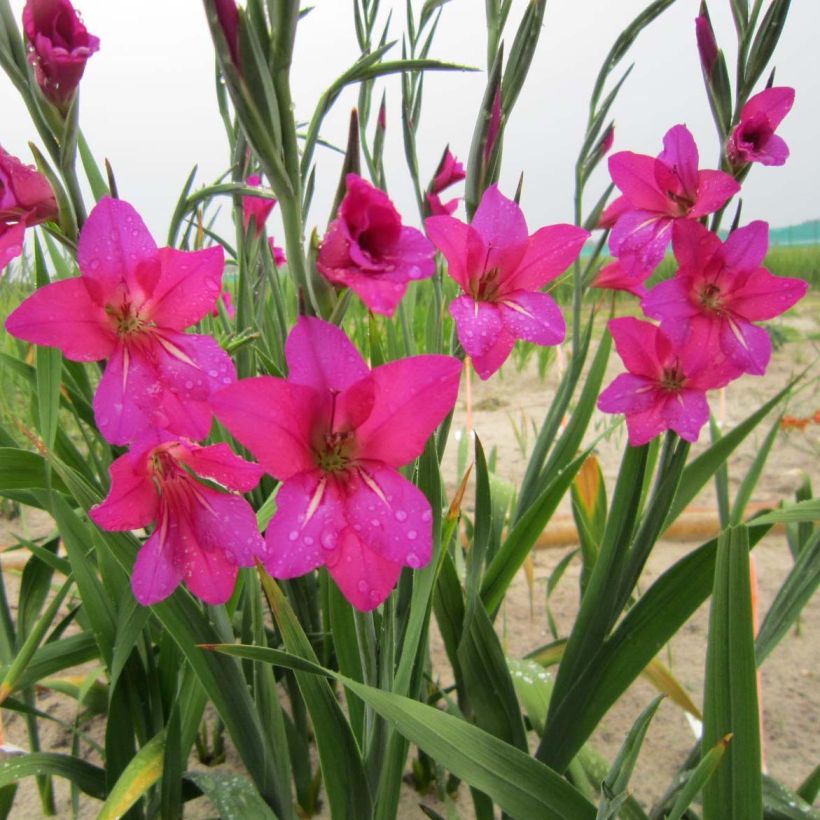

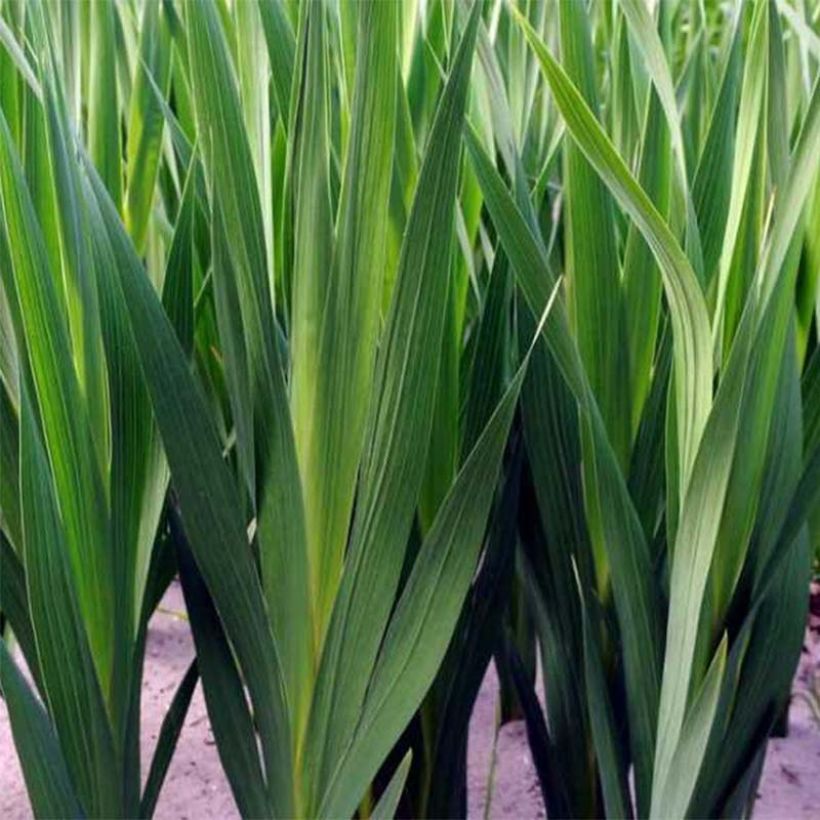



Plant habit
Flowering
Foliage
Botanical data
Gladiolus
byzantinus
Whistling Jack
Iridaceae
Byzantine Gladiolus, Corn Flag, Whistling Jack
Mediterranean
Other Gladioli
View all →Planting and care
Plant Byzantine Gladioli in well-drained, loamy, sandy soil, preferably in full sun or under light shade in the late afternoon, especially in the south. They tolerate limestone well. In our warm regions, Byzantine Gladioli bloom earlier and go into dormancy in summer to escape drought. In colder and more humid regions, they bloom in summer and go into rest in September. Plant the corms at a depth of 8-10 cm (3-4in), spaced 15-20 cm (6-8in) apart. Water regularly to prevent the substrate from drying out. In our regions with harsh winters, dig up the corms in autumn and store them indoors to protect them from the cold, just as you would with large hybrid gladioli. In milder climates, the corms can remain in the ground throughout the winter.
In heavy soil, reduce the planting depth to 4/5 cm (2in) and mix the substrate with some compost, coarse sand, and gravel.
After flowering, cut the withered stem, but be sure to leave 4-5 leaves on the plant to allow for regeneration and propagation.
Planting period
Intended location
Care
-
, onOrder confirmed
Reply from on Promesse de fleurs
Similar products
Haven't found what you were looking for?
Hardiness is the lowest winter temperature a plant can endure without suffering serious damage or even dying. However, hardiness is affected by location (a sheltered area, such as a patio), protection (winter cover) and soil type (hardiness is improved by well-drained soil).

Photo Sharing Terms & Conditions
In order to encourage gardeners to interact and share their experiences, Promesse de fleurs offers various media enabling content to be uploaded onto its Site - in particular via the ‘Photo sharing’ module.
The User agrees to refrain from:
- Posting any content that is illegal, prejudicial, insulting, racist, inciteful to hatred, revisionist, contrary to public decency, that infringes on privacy or on the privacy rights of third parties, in particular the publicity rights of persons and goods, intellectual property rights, or the right to privacy.
- Submitting content on behalf of a third party;
- Impersonate the identity of a third party and/or publish any personal information about a third party;
In general, the User undertakes to refrain from any unethical behaviour.
All Content (in particular text, comments, files, images, photos, videos, creative works, etc.), which may be subject to property or intellectual property rights, image or other private rights, shall remain the property of the User, subject to the limited rights granted by the terms of the licence granted by Promesse de fleurs as stated below. Users are at liberty to publish or not to publish such Content on the Site, notably via the ‘Photo Sharing’ facility, and accept that this Content shall be made public and freely accessible, notably on the Internet.
Users further acknowledge, undertake to have ,and guarantee that they hold all necessary rights and permissions to publish such material on the Site, in particular with regard to the legislation in force pertaining to any privacy, property, intellectual property, image, or contractual rights, or rights of any other nature. By publishing such Content on the Site, Users acknowledge accepting full liability as publishers of the Content within the meaning of the law, and grant Promesse de fleurs, free of charge, an inclusive, worldwide licence for the said Content for the entire duration of its publication, including all reproduction, representation, up/downloading, displaying, performing, transmission, and storage rights.
Users also grant permission for their name to be linked to the Content and accept that this link may not always be made available.
By engaging in posting material, Users consent to their Content becoming automatically accessible on the Internet, in particular on other sites and/or blogs and/or web pages of the Promesse de fleurs site, including in particular social pages and the Promesse de fleurs catalogue.
Users may secure the removal of entrusted content free of charge by issuing a simple request via our contact form.
The flowering period indicated on our website applies to countries and regions located in USDA zone 8 (France, the United Kingdom, Ireland, the Netherlands, etc.)
It will vary according to where you live:
- In zones 9 to 10 (Italy, Spain, Greece, etc.), flowering will occur about 2 to 4 weeks earlier.
- In zones 6 to 7 (Germany, Poland, Slovenia, and lower mountainous regions), flowering will be delayed by 2 to 3 weeks.
- In zone 5 (Central Europe, Scandinavia), blooming will be delayed by 3 to 5 weeks.
In temperate climates, pruning of spring-flowering shrubs (forsythia, spireas, etc.) should be done just after flowering.
Pruning of summer-flowering shrubs (Indian Lilac, Perovskia, etc.) can be done in winter or spring.
In cold regions as well as with frost-sensitive plants, avoid pruning too early when severe frosts may still occur.
The planting period indicated on our website applies to countries and regions located in USDA zone 8 (France, United Kingdom, Ireland, Netherlands).
It will vary according to where you live:
- In Mediterranean zones (Marseille, Madrid, Milan, etc.), autumn and winter are the best planting periods.
- In continental zones (Strasbourg, Munich, Vienna, etc.), delay planting by 2 to 3 weeks in spring and bring it forward by 2 to 4 weeks in autumn.
- In mountainous regions (the Alps, Pyrenees, Carpathians, etc.), it is best to plant in late spring (May-June) or late summer (August-September).
The harvesting period indicated on our website applies to countries and regions in USDA zone 8 (France, England, Ireland, the Netherlands).
In colder areas (Scandinavia, Poland, Austria...) fruit and vegetable harvests are likely to be delayed by 3-4 weeks.
In warmer areas (Italy, Spain, Greece, etc.), harvesting will probably take place earlier, depending on weather conditions.
The sowing periods indicated on our website apply to countries and regions within USDA Zone 8 (France, UK, Ireland, Netherlands).
In colder areas (Scandinavia, Poland, Austria...), delay any outdoor sowing by 3-4 weeks, or sow under glass.
In warmer climes (Italy, Spain, Greece, etc.), bring outdoor sowing forward by a few weeks.






























